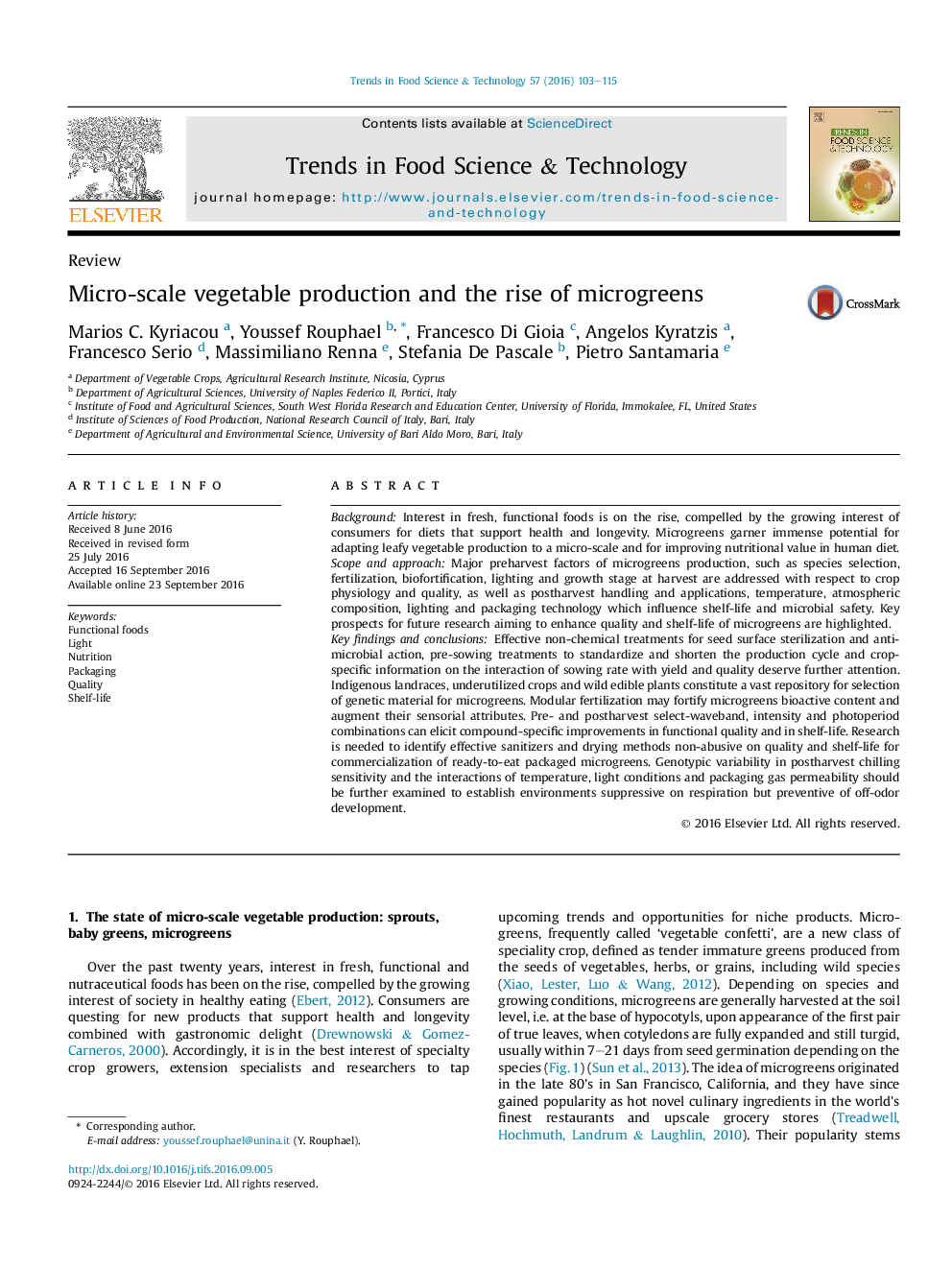| Article ID | Journal | Published Year | Pages | File Type |
|---|---|---|---|---|
| 5523849 | Trends in Food Science & Technology | 2016 | 13 Pages |
â¢Pre- and postharvest research advances and prospects on microgreens were examined.â¢Modular fertilization may fortify bioactive content and sensorial attributes.â¢Light quality, intensity and period elicit improvements in bioactive content.â¢Optimal temperature-light-OTR interaction enhances quality and extends shelf-life.â¢Effective sanitizers and drying methods non-abusive on shelf-life need be developed.
BackgroundInterest in fresh, functional foods is on the rise, compelled by the growing interest of consumers for diets that support health and longevity. Microgreens garner immense potential for adapting leafy vegetable production to a micro-scale and for improving nutritional value in human diet.Scope and approachMajor preharvest factors of microgreens production, such as species selection, fertilization, biofortification, lighting and growth stage at harvest are addressed with respect to crop physiology and quality, as well as postharvest handling and applications, temperature, atmospheric composition, lighting and packaging technology which influence shelf-life and microbial safety. Key prospects for future research aiming to enhance quality and shelf-life of microgreens are highlighted.Key findings and conclusionsEffective non-chemical treatments for seed surface sterilization and antimicrobial action, pre-sowing treatments to standardize and shorten the production cycle and crop-specific information on the interaction of sowing rate with yield and quality deserve further attention. Indigenous landraces, underutilized crops and wild edible plants constitute a vast repository for selection of genetic material for microgreens. Modular fertilization may fortify microgreens bioactive content and augment their sensorial attributes. Pre- and postharvest select-waveband, intensity and photoperiod combinations can elicit compound-specific improvements in functional quality and in shelf-life. Research is needed to identify effective sanitizers and drying methods non-abusive on quality and shelf-life for commercialization of ready-to-eat packaged microgreens. Genotypic variability in postharvest chilling sensitivity and the interactions of temperature, light conditions and packaging gas permeability should be further examined to establish environments suppressive on respiration but preventive of off-odor development.
